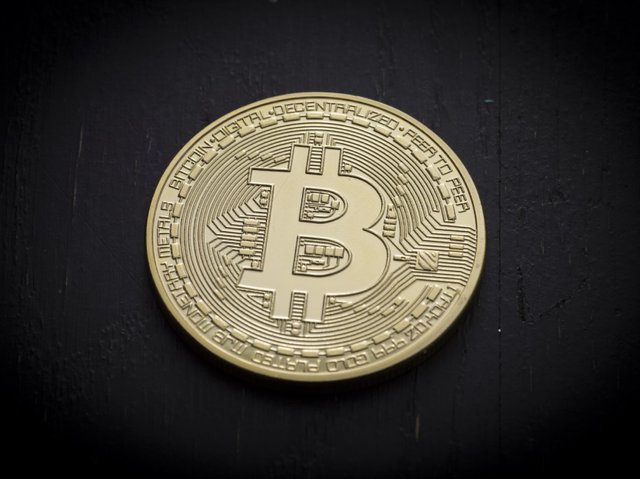The layman’s guide to Bitcoin and the Blockchain.

The one thing that makes economics hard to understand is that there is no such thing as money. Money is just an item for trade — valuable paper, or a valuable transaction. Nothing actually has a fixed or defined concrete value. Value is a completely abstract idea. A five dollar bill is literally just a piece of green paper. We’ve just inherently developed the idea of its value because we regularly trade it in for items we believe to be worth 5 dollars.
Background: Centralized Institutions
Banks
You may have heard about the 2008 financial crisis. What you probably don’t know is that the global financial impact was magnified by excessive risk taking by banks.
Banks, legally, were only required to actually hold 10% of your money in liquid assets. A liquid asset is anything that can be transferred easily: cash and stocks? Sure. But a house? Not exactly.

So every time you put in 10 million dollars in to the bank, they’d only have 1 million out of the 10 you gave them in cash. The other 9 they’d use for investing and other purposes — they’d put it in assets that would grow in value over time. The reason they’re able to give you back 5 million when you ask for it is because there’s some other guy who’s put 100 million in the bank, so the bank has that 10 million from that guy’s money to take from to give to you. At the point where they have less than 10% total, they’re required to liquidate (read: move to cash) enough of their assets to abide by the 10% rule. (Note: the legal requirement is that the bank must keep 10% of their total deposited assets, among all their customers).
On a side note, if you’ve ever wondered why, this explains the reason why banks offer different types of bank accounts: checking accounts generally require high liquidity (because you need to withdraw frequently), so banks can’t take much and use it for investing; they need to keep it in cash. Savings accounts are for long term, so banks can use it for investing and to grow that money. It makes sense that banks want to incentivize customers to use these accounts more so that banks can invest more of this money — they do that in the form of higher interest rates for savings accounts and close-to-zero rates for checking accounts.
Trending AI Articles:
- Machines Demonstrate Self-Awareness
- Visual Music & Machine Learning Workshop for Kids
- Part-of-Speech tagging tutorial with the Keras Deep Learning library
- AI & NLP Workshop
So what happens when a lot of people want to pull their money out of the bank at once? Well, the bank can give the 10% they have, but often times, the other 90% isn’t very liquid and the bank has to say “Sorry, but we lost $90 million of your deposits. Here’s 10 million though, have a nice day!”
And then you have the Great Depression.
A bank is a centralized institution (you’re going to hear that term several times) that controls your money and could very easily lose a lot of it because it’s only required to hold 10% of all its deposited assets in liquid form.
Governments — Fiat Currency (read: literally just normal, regular currencies like the USD that are managed by a government)
When governments are incompetent or corrupt, like those of Zimbabwe and Venezuela, their currencies experience hyperinflation, tanking the value of currency and bankrupting the nation. The government prints more and more money, dramatically reducing the value of each unit of currency.
The US government wasn’t immune to this. In fact, in the first decade that the US dollar existed, it was more than 10 times more volatile than Bitcoin is right now.
Fiat currencies, like the dollar, can be printed and regulated and dictated by one authority — the government. When more money’s printed, the value of each unit of currency goes down — known to many as inflation. Current inflation rates are high, which means for every dollar you own in cash or the bank, the value of your money is going down.
Gold, however, doesn’t require a faith in government or authority. There’s a fixed supply of gold — a finite amount available in the world, and no central authority controls it. Nobody can influence how much gold there is in circulation — there just is whatever amount there is. More can be mined, but at some point all the gold available on the planet will be in circulation, and mining yields tiny amounts of it. Since nobody can just get gold out of thin air, it doesn’t inflate like fiat currencies.
So if gold is so perfect, why don’t we use it as a currency?
Imagine walking to Starbucks, gold nugget in pocket (probably pulling your pants up every five seconds because of the weight), walking up to the counter, and then shaving off exact measured amounts to hold onto value of the 5 cents of change for your latte. Not very efficient.
The government, like a bank, is a centralized institution that basically controls the value of fiat currency — the value of that currency is prone to inflation and loses value. Gold is decentralized but is impractical for daily currency.
Solution: Bitcoin
What is Bitcoin?
It’s literally just a digital version of gold (except better). Just like gold, no central authority controls the supply of it. So it can’t inflate like fiat currencies do.
There is sophisticated technology to control the supply of Bitcoin — it’s “mined” digitally, similar to gold.
And then some. Bitcoin, because of its digital form, can be transferred to anyone, anywhere, securely, in real time, in any denominations. No shavings or on-demand gold weighing scale necessary.
Sidenote: Bitcoin’s whitepaper is pretty informative and has a lot of good information beyond this article if you’re interested.
Crypto-
In cryptography, hash functions are often used to securely perform identity checks and transfer data. These hash functions are one-way functions: it’s easy to find the output for a given input, but it’s almost impossible to find the input given an output. These types of functions are useful for a variety of things; the most common use is for most login systems. An app or website never needs to store your actual password — this could prove a huge security risk. Instead, all they need to know is whether the password you enter when you try to log in is the same text as what they have on record when you signed up. So, instead, they could store the one-way hash as your password and then when you sign up and check if the stored hash and the login hash (of whatever text you type in when you try to log in) match.
Bitcoin, Ethereum, and all other cryptocurrencies are based on the blockchain, which is built on one-way hash functions.
The Blockchain
The blockchain is the backbone of the Bitcoin technology, and it’s quite literally what it sounds like — a digital chain of blocks. The blockchain is a ledger that contains a record of every transaction ever made with bitcoins since its inception. Each block holds information about transactions. There’s a network of computers on the blockchain, and each one of these computers holds its own copy of the entire blockchain.
When one computer on the network propagates a block to the network, each computer on the network will verify the identity of the computer and the validity of the block being pushed. If a majority of the other computers on the network accept the validity of the node and the block, the block officially gets pushed onto the blockchain.
Mining
These computers on the blockchain network are called “mining nodes.” These mining nodes are responsible for validating transactions, creating new blocks, and propagating them to the network.
As a reward for maintaining this blockchain network, these mining nodes are awarded a set amount of Bitcoin for each block they push.
The production of bitcoin is controlled by code that dictates you must find a specific answer to a given hashing problem in order for mining nodes to unlock new bitcoins: the mining node must find a hash that results in a new string with a given number of zeros at the beginning.
Each new block in the blockchain is based on all previous blocks; the set of all current blocks is hashed to a string of characters. For example, let’s say the hash of the current state of the blockchain is the string “0000abcd.” This tells us that the current “difficulty” of the hashing problem is 4, because the string starts with 4 zeros. To push the new block, we first append the hashes of the identifiers of transactions made by other people that we want to propagate, as well as the hash of the transaction identifier that gives the mining node Bitcoin— “trans1”, “trans2”, and “givemebitcoin.” Now our current string is “0000abcd-trans1trans2givemebitcoin.” Now we need to add a final piece, called a “nonce”, which will make the hash of the full string lead with the same number of zeros as the difficulty of the problem (4 in this example).
We first start with the nonce as “1”; chances are, you won’t get a leading zero in the hash. Then we try 2, 3, 4, 5, and so on. The mining node needs to brute force nonces until it gets a hashed string with the leading number of zeros equal to the Bitcoin mining difficulty.
This post and this article are extremely helpful for detailing the mining process.
The Bitcoin mining difficulty number is controlled by algorithms that assess how quickly Bitcoin is currently being mined and try to increase the difficulty so that a new Bitcoin is mined every ten minutes or so. Check out the current Bitcoin difficulty here.
It’s Still Young
Bitcoin is still a very young and early currency. While it’s true that not many places accept Bitcoin as payment, everything takes time. Time and patience.
Just a decade after its creation, the US dollar had already suffered inflation and collapsed. Bitcoin, on the other hand, is worth more than ever just 9 years after its inception, and currently boasts a market cap of over $40 billion.
It’s still volatile and a very risky investment, but in the long run, will prove extremely valuable.